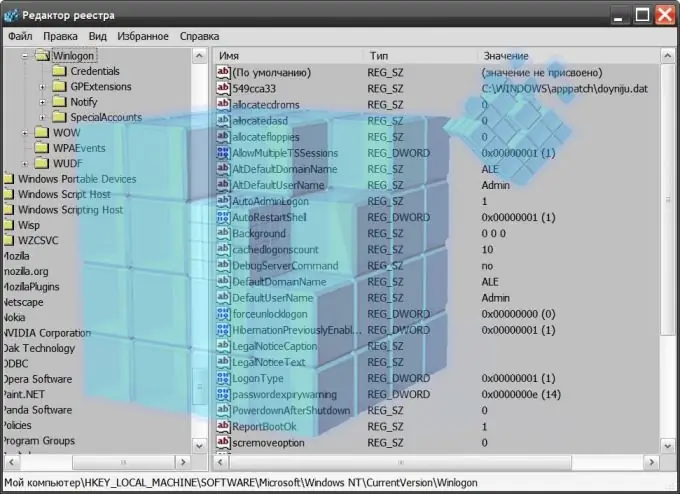Editing the Windows registry by the user is an action potentially dangerous for the normal functioning of the operating system. Microsoft does not recommend doing this, however, sometimes it becomes necessary to make “spot” changes to the registry that cannot be done with standard OS tools. Therefore, the manufacturer still includes a registry editor in the software installed by default.

Instructions
Step 1
Right-click the "My Computer" icon on the desktop and select "Registry Editor" from the drop-down context menu - this will give you access to the tool for modifying the system registry. If this icon is not on your desktop, then open the main menu on the "Start" button and select the "Run" line in it. This command (or the keyboard shortcut WIN + R) opens the program launch dialog. Type regedit in the input field and click the "OK" button - you can open the registry editor this way.
Step 2
Save a backup before editing the registry. There is no undo functionality in this editor, so a copy may be needed to roll back to its original state in case of an error. Expand the "File" section in the menu and select the "Export" item. A file save dialog will open - specify the storage location and file name and click the "Save" button.
Step 3
Navigate to the branch where you want to add the key by sequentially expanding the folders in the left pane of the editor. You can see the full path to the folder that is currently selected in the status bar - this is the bar at the very bottom of the editor window.
Step 4
Right-click the free space in the right pane of the editor, where the parameters of the branch you need are located. There will be only one line in the context menu ("New"), hovering the mouse over which you will see a set of five types of keys (string parameter, binary parameter, DWORD parameter, multi-string parameter, expandable string parameter) - select the one you need. Exactly the same choice can be seen if you expand the "Edit" section of the editor menu and select "New." The "DWORD parameter" creates a key whose value must be an integer four-byte number in binary, hexadecimal or decimal format. "Binary parameter" must contain binary data in hexadecimal format "String parameter" must contain text of fixed length. "Expandable string parameter" creates a key with a text string of variable length. "Multi-string parameter" creates a key containing multiple lines of text separated by spaces, commas, or whatever other characters.
Step 5
Type the name of the key immediately after selecting its type - the editor will assign a default name to the created parameter and immediately enable its editing. When finished with the key name, press Enter.
Step 6
Right-click the created parameter, enter its value and click OK.
Step 7
Close the editor. There is no procedure for saving changes here - everything that you change in the editor is immediately recorded in the registry.






